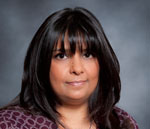As chair of the Surveillance Group of the National Forum for Heart Disease and Stroke Prevention, Steve Sidney, MD, is on the front lines of efforts to measure cardiovascular disease across the country.
The rate of ischemic stroke among 11 million people enrolled in 15 health plans across the country decreased 15 percent from 2000 to 2008 according to research results presented in March by Steve Sidney, MD, associate director for clinical research at the Division of Research at Kaiser Permanente Northern California.
Sidney presented Cardiovascular Research Network (CVRN) results from the Development of a Cardiovascular Surveillance System in the CVRN study during the annual meeting of the American Heart Association’s Council on Epidemiology and Prevention.
In addition to the decrease in the rate of hospitalizations for ischemic stroke among this large, diverse population, researchers also noted a 37 percent increase in the rate of ischemic stroke among those aged 25 to 44.
During ischemic stroke, which accounts for about four of every five strokes, an artery feeding oxygen-rich blood to the brain is blocked, often by a clot, and part of the brain dies.
Heart failure rate declines among middle-aged, but increases slightly among those 70+
The CVRN data also showed two notable heart failure trends, said Sidney — a 20 percent decline in hospitalizations for heart failure among the middle-aged and a modest increase among people in their 70s and beyond.
Sidney explained that the data may suggest that improved management of heart failure-related illnesses kept those in midlife out of the hospital until much later in life.
CVRN surveillance data a powerful public health tool
The CVRN is more than a group of health plans collaborating to produce a huge health care data set. Sidney says its data, and the teamwork that produced it, is a powerful tool for research and public health monitoring.
“Pooling this data has enabled us to set up a database platform to address questions about surveillance, comparative effectiveness and health disparities,” he said.
The CVRN was founded in 2007 by the National Heart, Blood and Lung Institute to give HMO Research Network member organizations a framework for answering questions about cardiovascular epidemiology. The CVRN also assists network members to help their patients avoid cardiovascular disease or learn to manage it effectively. Among the CVRN’s 15 health care systems are six Kaiser Permanente sites, including Northern California, with its 3.3 million members.
One research trend is large-scale collaboration
The CVRN and Sidney’s study, funded by a $7.2 million NIH grant awarded in 2009 through the American Recovery and Reinvestment Act, are examples of the kind of large-scale collaborations in cardiovascular research that are here to stay.
“There’s been a big move to get people working in all kinds of networks,” said Sidney. “The NIH in particular wants to encourage more sites to work together so that large-scale research can be performed more efficiently and the data collected will be more representative of the U.S. population.”
Another research trend, he noted, is examining genetic connections to cardiovascular disease risks. “That is another area emphasizing networks because of the large study populations you need,” said Sidney. “In some instances, genomics researchers may need 100,000 people or more to examine a particular research question.”
Surveillance data meant to help change policy and practice
As chair of the surveillance group of the National Forum for Heart Disease and Stroke Prevention, Sidney is on the front lines of efforts to measure cardiovascular disease across the country.
He says such measurements are only useful if they help influence public policy and lead to improvements in how medicine is practiced. “You can not make reasonable policy about things that affect cardiovascular health if you don’t have a basic infrastructure for measuring what’s happening,” said Sidney.







This Post Has 0 Comments